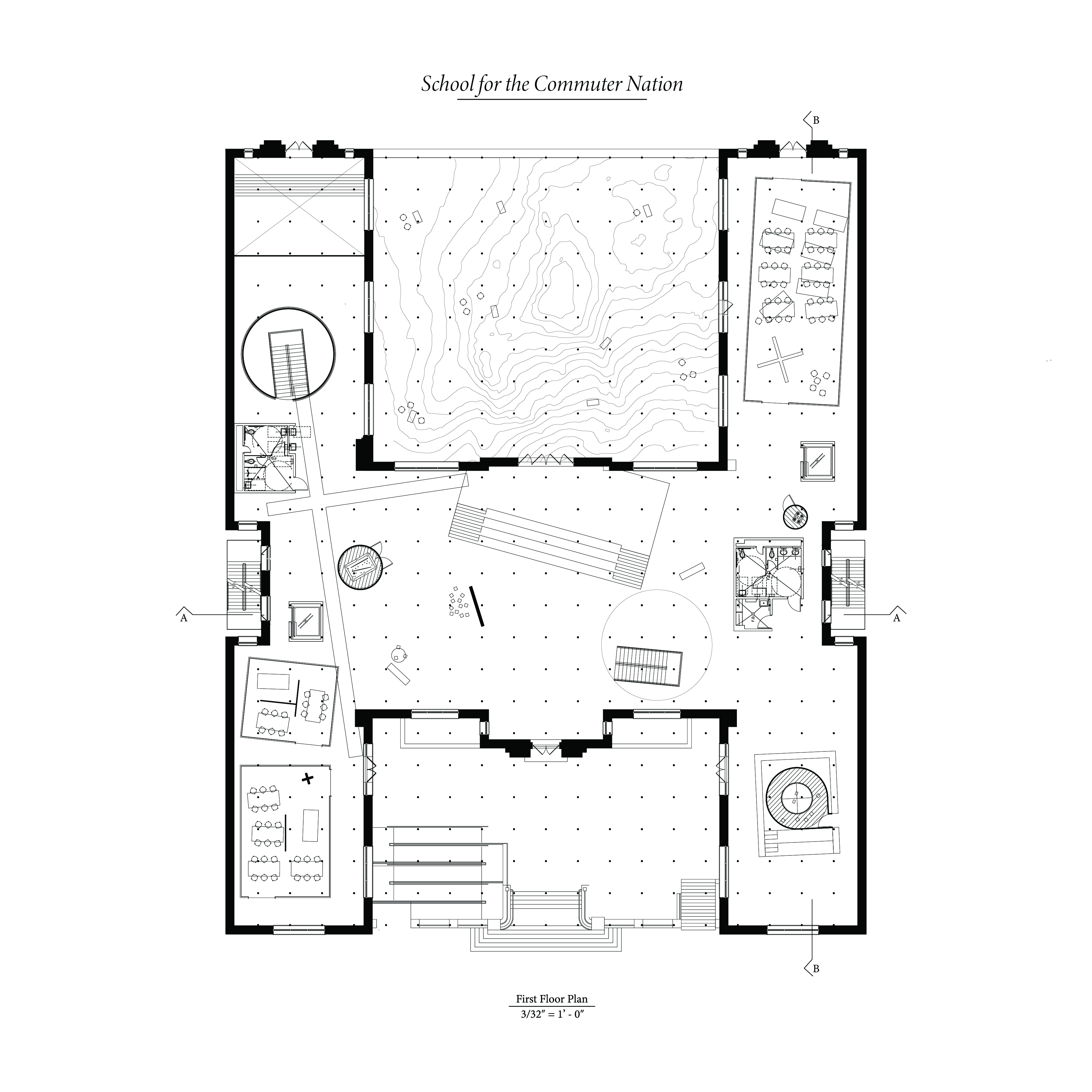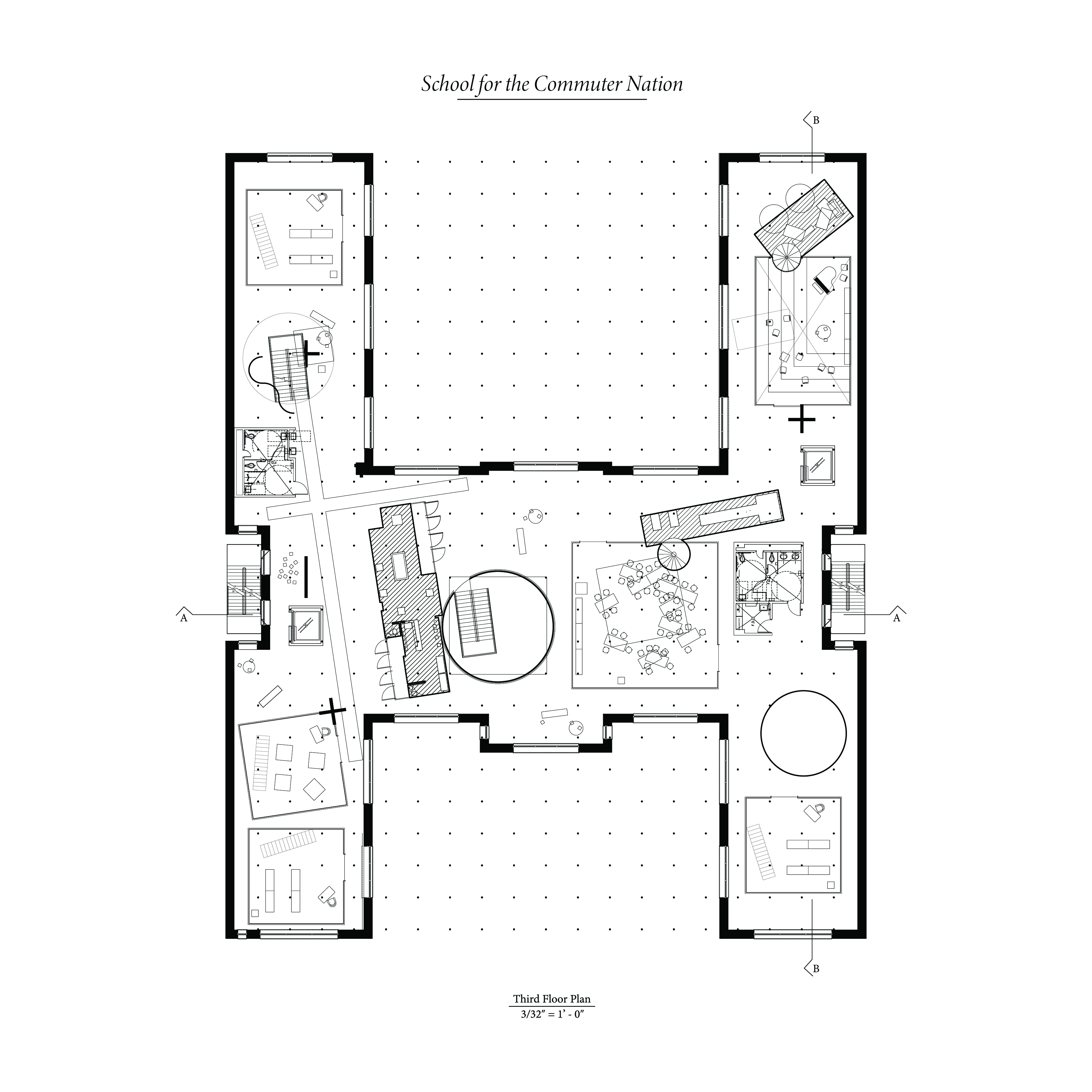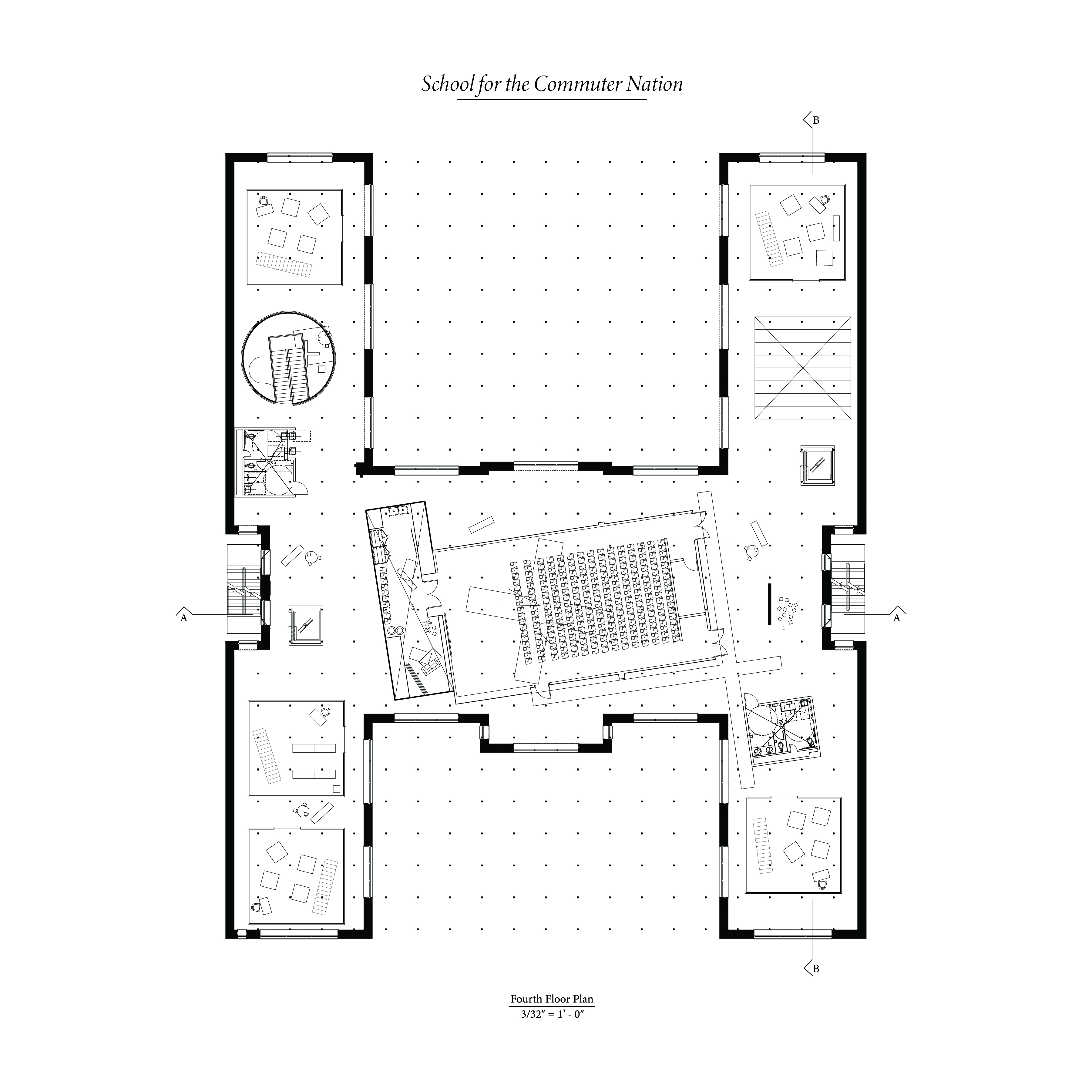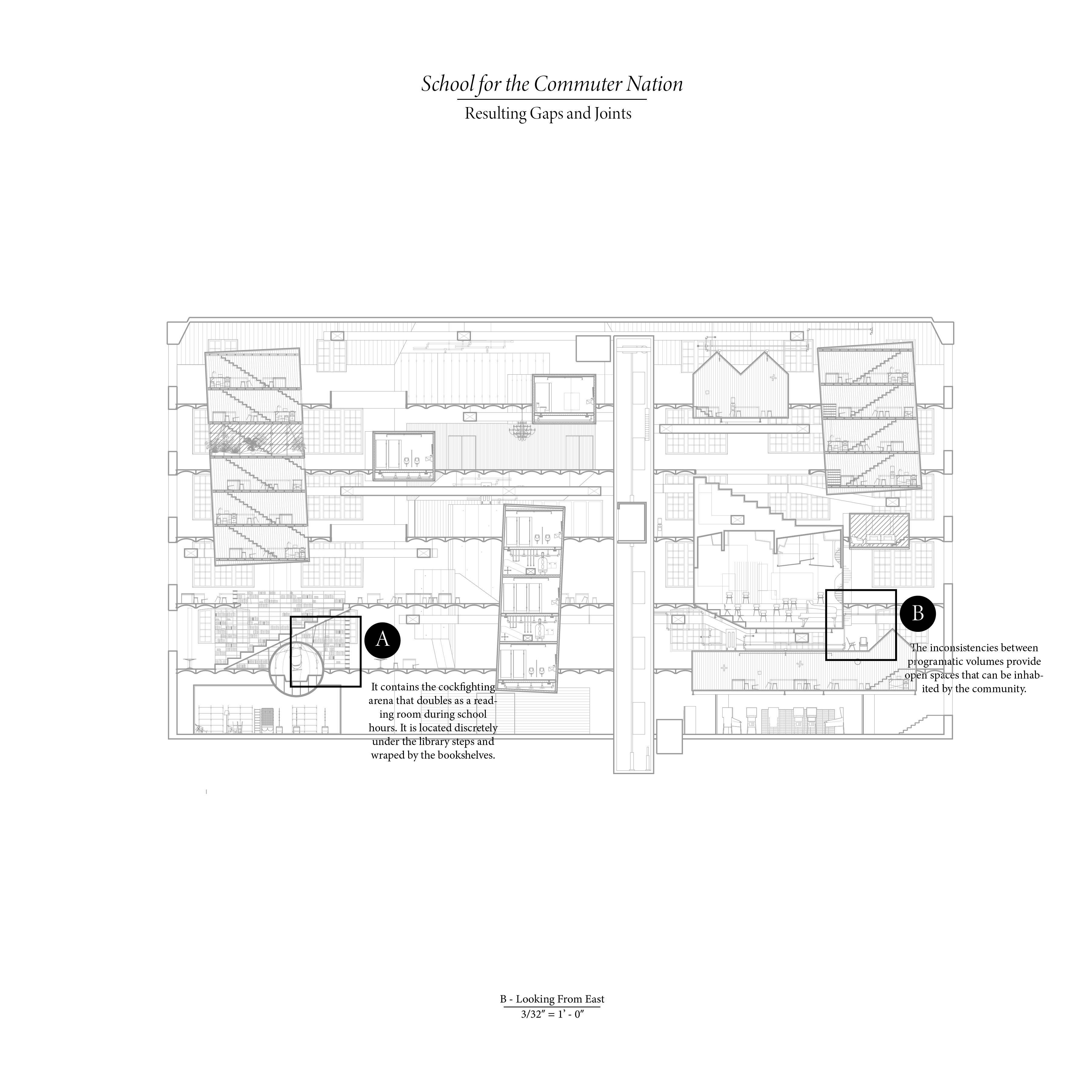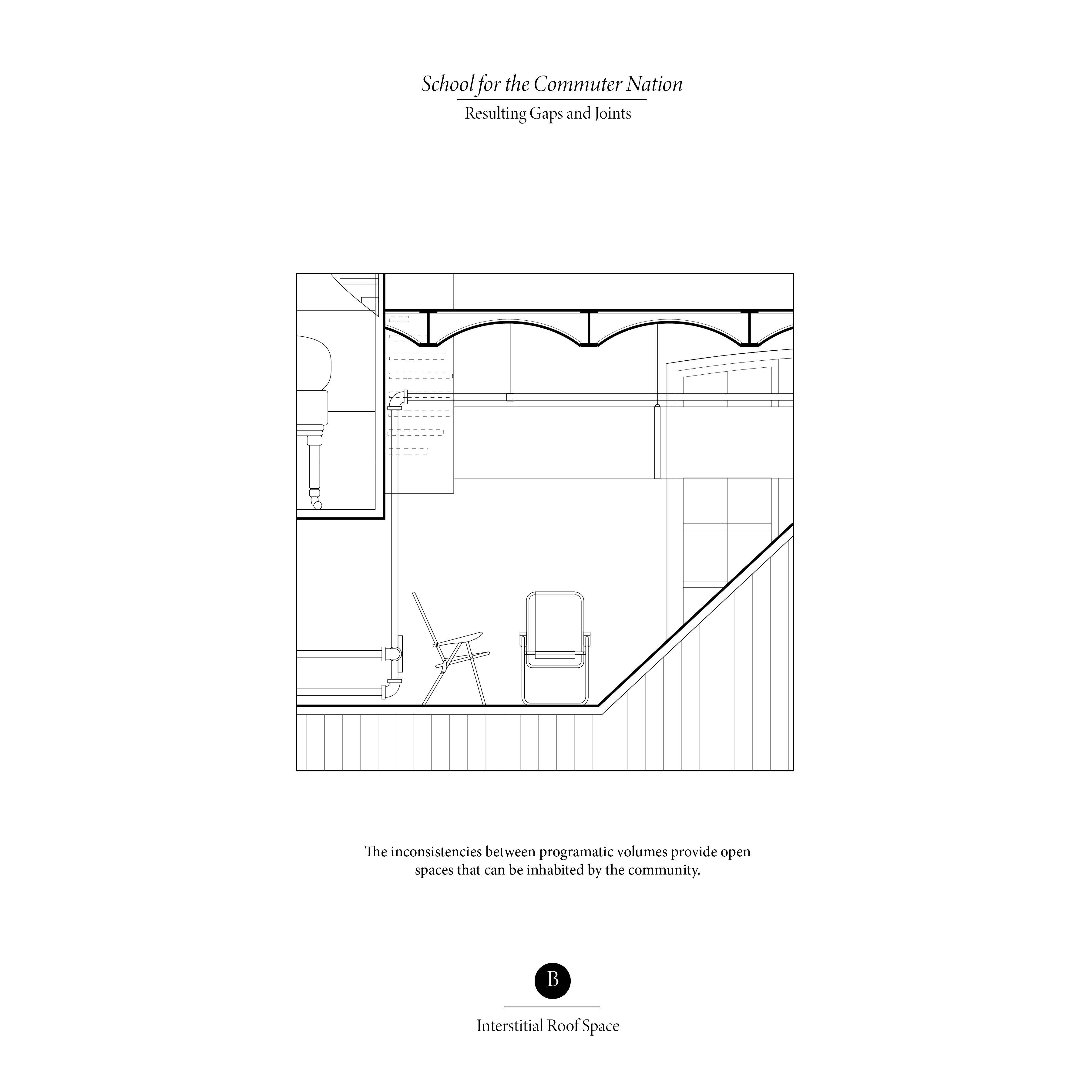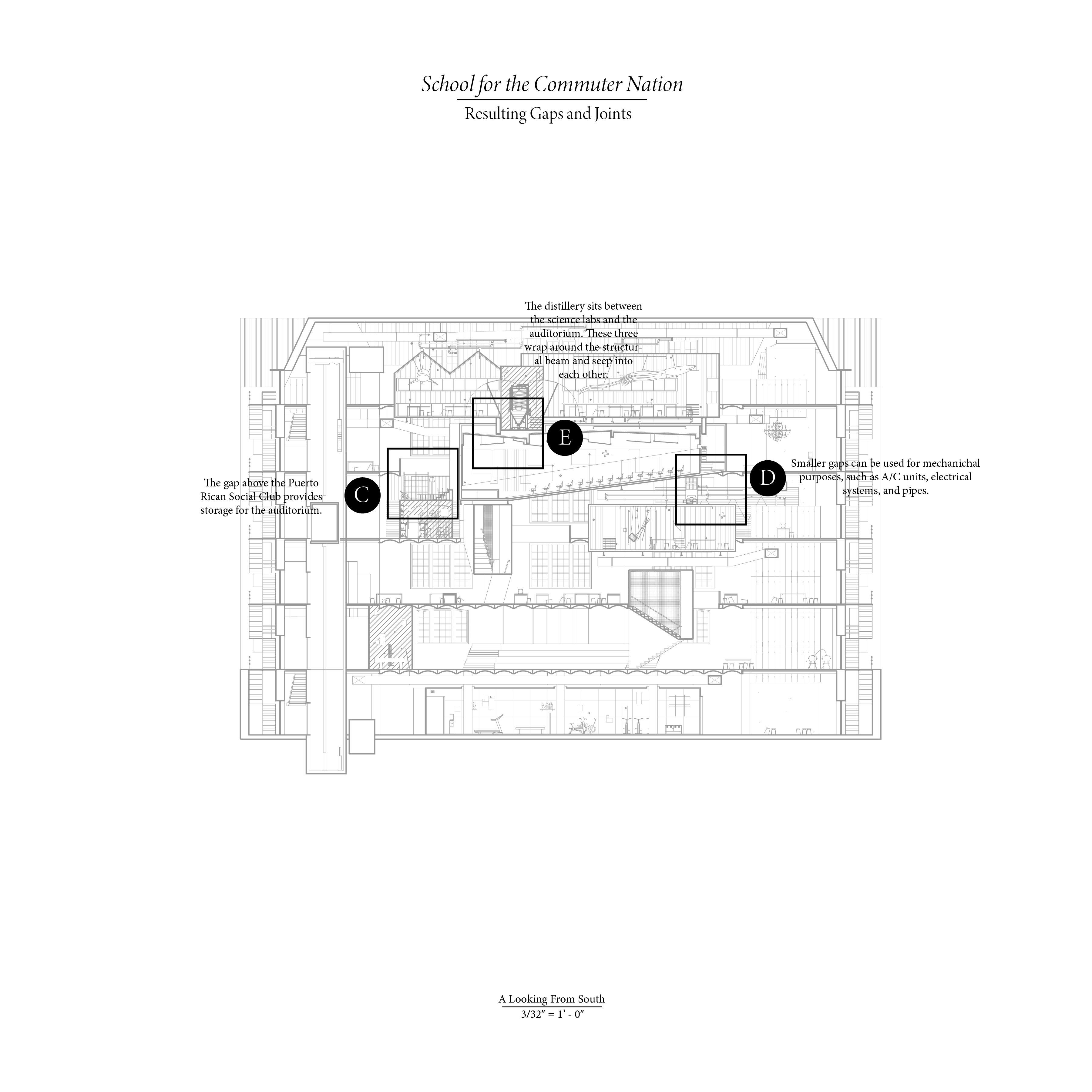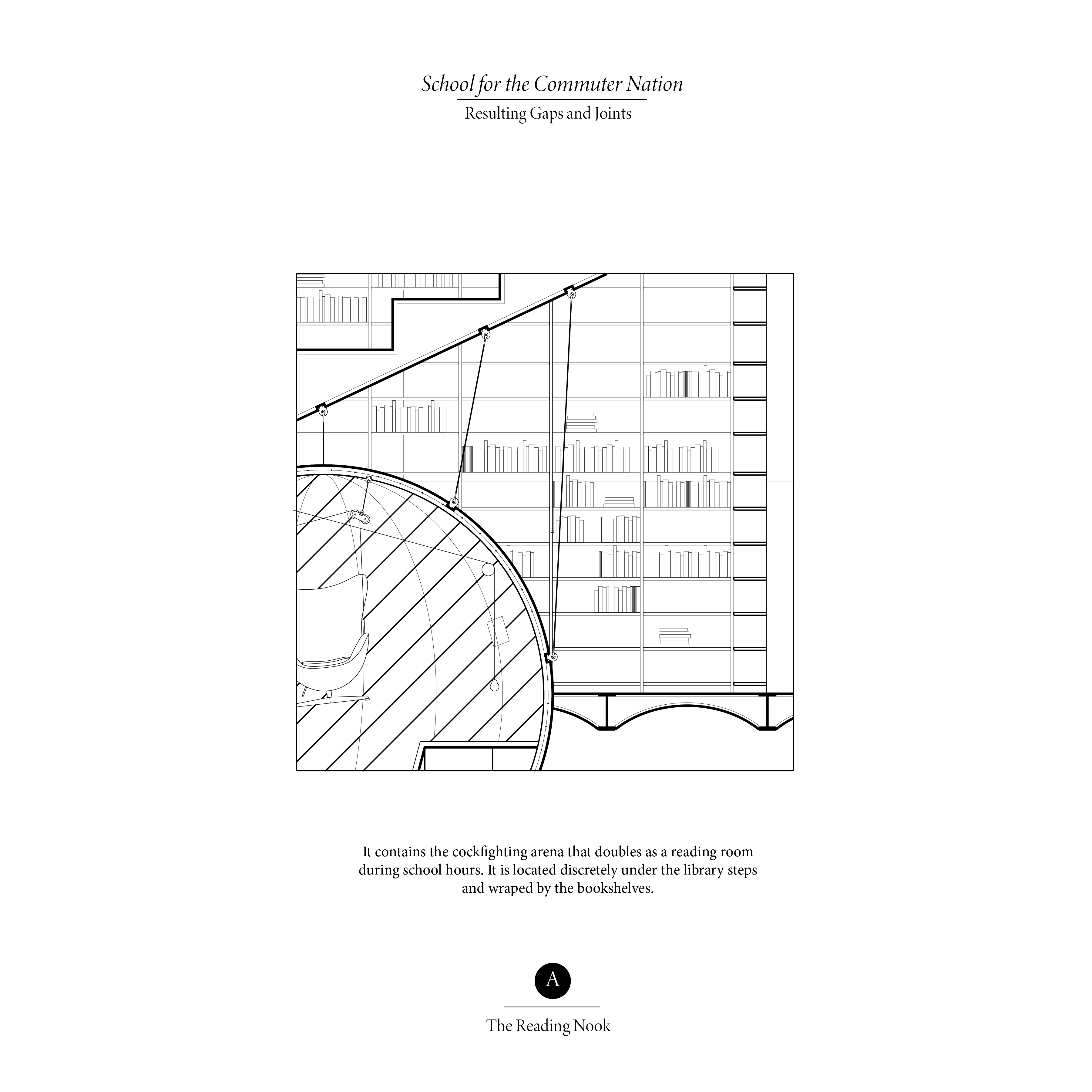3. School for the Commuter Nation
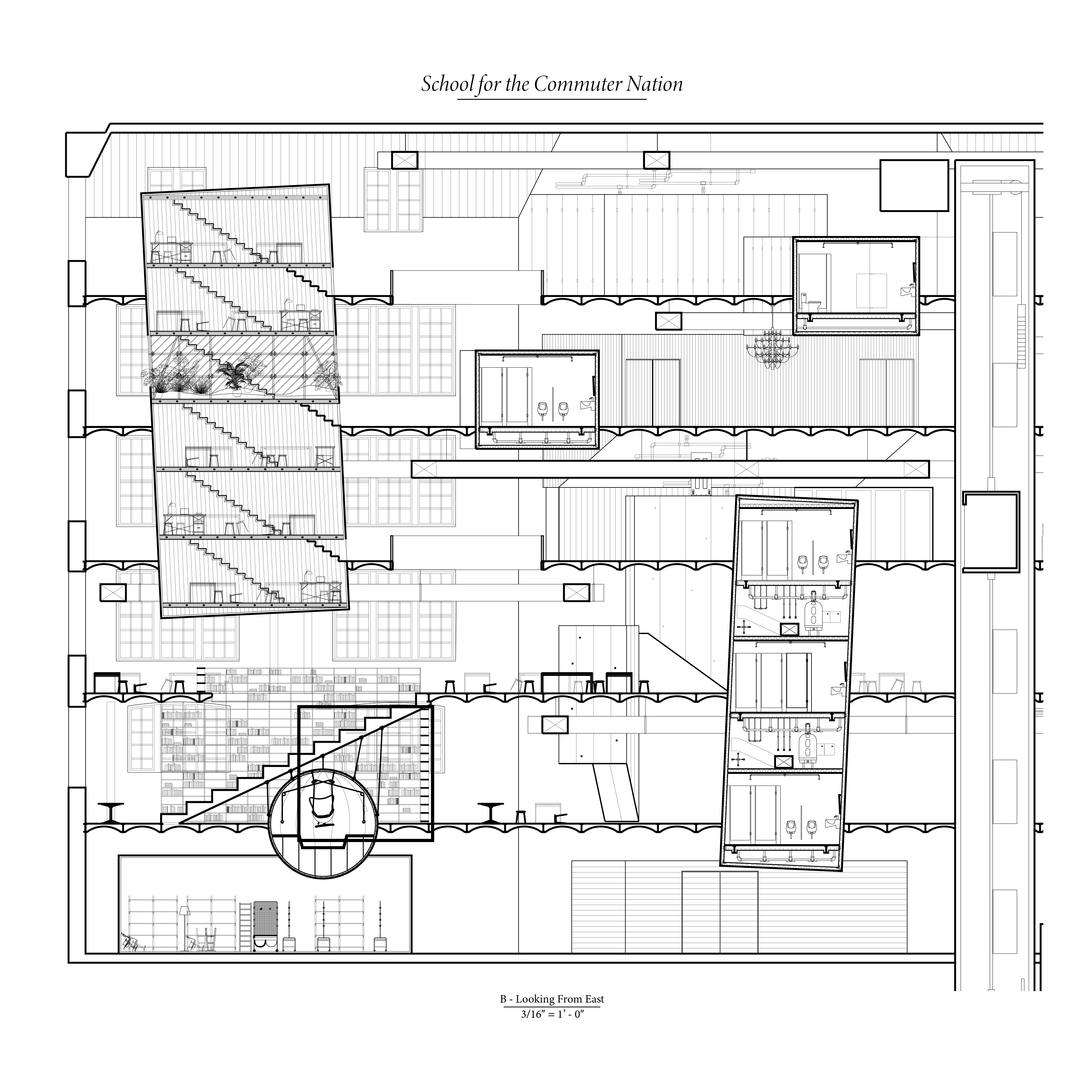
From GSAPP Core II Studio
Born from a critical look into migration patterns of the Puerto Rican people over recent years, the School for the Commuter Nation questions the traditional spaces and experiences that are admitted into the school program to address issues of American colonialism affecting Puerto Rican cultural and politica agency. By incorporating mundane and even frowned upon activities of the Puerto Rican community, it attempts to generate a sanctuary space for their identity to exist outside of the American cultural ‘policing’ in hopes that it will feed into the education and sense of self of new generations.
The school negotiates its encounters betwee the two programs through common spaces and schedule overlaps in order to establish what will be accessible, and at what time, to the students or to visitors of the enclaves. The enclaves occupy 18 interstitial spaces and generate new residual spaces that are sometimes used for utilities or buffer bettween the two, and sometimes serve as the link giving away what is between the walls. The traces of both programs’ users are picked up by the users of the other, constantly generating dialog of the two lives of the building.

